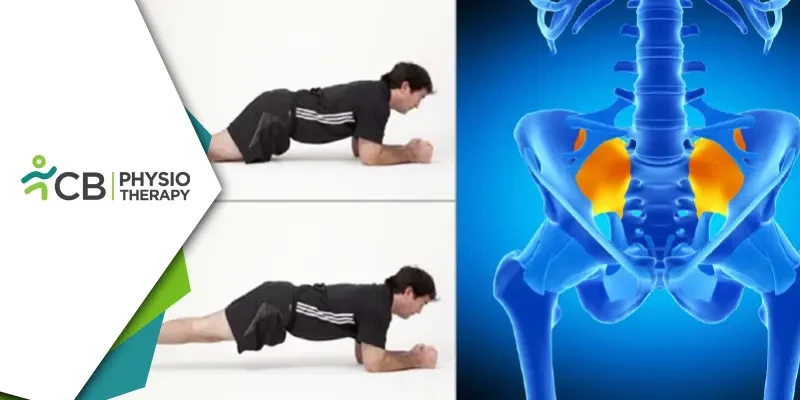Sacroiliac joint pain, often abbreviated as SIJ pain, is a common musculoskeletal issue that affects countless individuals worldwide. This condition can lead to discomfort, hip pain, decreased mobility, and a significant impact on one's quality of life. Fortunately, physiotherapy has emerged as a crucial tool for diagnosing and relieving sacroiliac joint pain, offering a non-invasive and holistic approach to addressing this problem. In this comprehensive guide, we will explore about sacroiliac joint and the role physiotherapy plays in relieving it.
Understanding the Sacroiliac Joint
The sacroiliac joint is located in the pelvis, connecting the triangular bone at the base of the spine, known as the sacrum, to the iliac bones of the pelvis. It plays a crucial role in transmitting the forces between the upper body and the lower body, serving as a crucial pivot point for movement, such as walking, standing, and sitting. This joint is held together by strong ligaments and surrounded by a complex network of muscles, making it a stabilizing structure. Sacroiliac joint pain can result from various factors, including a sudden injury or impact to the sacroiliac joint, such as a fall or car accident, which can lead to SIJ pain. The hormonal changes and increased pressure on the pelvis during pregnancy can strain the sacroiliac joint, leading to pain. As people age, the sacroiliac joint can degenerate, leading to pain and discomfort. Conditions like ankylosing spondylitis and psoriatic arthritis can cause inflammation in the sacroiliac joint, leading to pain. Common symptoms of sacroiliac joint pain include localized pain on one side of the lower back which can radiate down the buttocks and thighs. The affected joint can become stiff, making it difficult to perform daily activities. Pain in the buttock region can be sharp or aching and may worsen with prolonged sitting or standing. In some cases, SIJ pain can cause referred pain in the leg, mimicking symptoms of sciatica.Role of Physiotherapy in Relieving Sacroiliac Joint Pain
Physiotherapy is an integral component of the treatment plan for sacroiliac joint pain, aiming to relieve pain, restore function, and improve the patient's overall quality of life. Here are the ways in which physiotherapy can help:
1: Manual Therapy: Physiotherapists employ manual techniques to address joint dysfunction and muscle imbalances. This may include joint mobilization, soft tissue manipulation, and stretching exercises to alleviate pain and improve joint mobility.
2: Strengthening Exercises: Specific exercises are prescribed to strengthen the muscles around the sacroiliac joint, enhancing stability and support. Core and hip muscles are targeted to reduce stress on the joint.
3: Stretching Exercises: Tight muscles can contribute to SIJ pain. Stretching exercises help improve flexibility and reduce tension in the affected area.
4: Postural Education: Physiotherapists educate patients on proper posture and body mechanics to prevent exacerbation of SIJ pain. This includes teaching techniques for sitting, standing, and lifting objects.
5: Pain Management Strategies: Physiotherapists may use modalities like thermotherapy, cryotherapy, TENS, Laser therapy, or Ultrasound to alleviate pain and inflammation.
6: Orthotics: In some cases, custom orthotics may be recommended to provide additional support and reduce strain on the sacroiliac joint.
7: Functional Rehabilitation: As patients progress, physiotherapists help them return to their normal daily activities and, if necessary, tailor their rehabilitation to specific sports or recreational pursuits.
Sacroiliac joint pain can be a debilitating condition, but physiotherapy offers a holistic and non-invasive approach to diagnose and relieve this discomfort. By addressing muscle imbalances, improving joint stability, and empowering patients with self-management strategies, physiotherapists play a crucial role in restoring comfort and mobility to those suffering from SIJ pain. If you or someone you know is experiencing sacroiliac joint pain, seeking professional guidance from a physiotherapist can be the first step towards a pain-free and active life.

